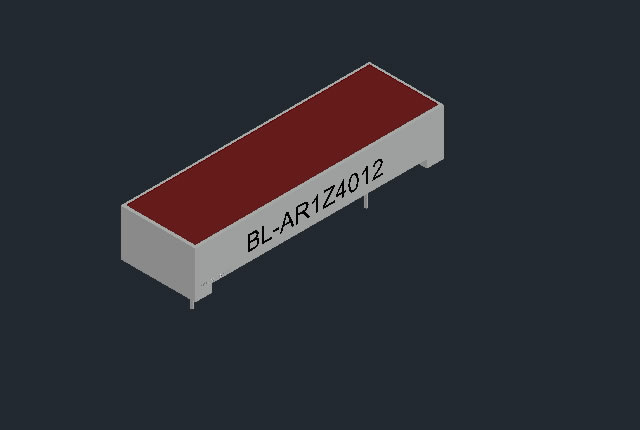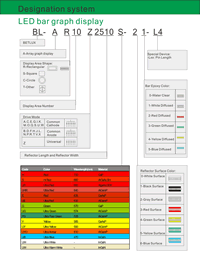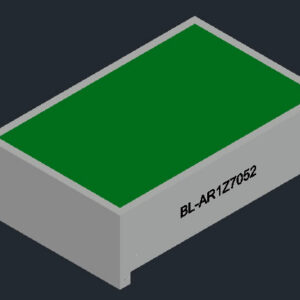Number of Bars
Series No:
Weight:(g/pcs)
Dimension:(mm)
Specification:
Inquiry
Description:
“Reliable Illumination for Modern Displays: The 40×12mm Rectangular LED Light Bar”
Introduction
In today’s advanced electronics landscape, LED light bars have become a fundamental component in modern display and indicator systems. The rectangular LED light bar (40×12mm, single bar) is a highly efficient lighting solution, known for its compact structure, brightness, and versatility. Designed to provide uniform light distribution and energy efficiency, this module serves a wide range of industrial and commercial applications — from precision instruments to smart devices.
Belonging to the LED bar graph family, this rectangular model combines high-intensity light output with consistent optical performance. It is an essential building block for LED bar display systems that require accurate visual feedback and long operational life. For engineers, electronic manufacturers, and purchasing professionals, the 40×12mm LED light bar represents an ideal balance of design simplicity and performance excellence.
Features of the 40×12mm LED Light Bar
The 40×12mm rectangular LED light bar is specifically engineered to meet high technical standards in illumination quality and durability. Below are its key performance features:
-
Compact Rectangular Design (40×12mm):
Its slim structure makes it easy to integrate into compact electronic assemblies or narrow display areas. -
High Luminous Intensity:
Offers strong and evenly distributed brightness that enhances readability and aesthetic appeal. -
Low Power Consumption:
Designed for energy efficiency, reducing operational costs without compromising visibility. -
Consistent Color Output:
Provides stable color performance across temperature variations, available in multiple shades (red, green, yellow, blue, white). -
Long Operational Lifespan:
Engineered to last up to 50,000 hours of continuous use, ideal for industrial environments that demand long-term reliability. -
Wide Viewing Angle:
The LED light bar ensures uniform visibility from different angles, making it perfect for multi-user or panel-facing designs. -
Durable Construction:
Encapsulated in high-grade epoxy resin, offering excellent resistance to vibration, humidity, and environmental factors. -
Easy Mounting and Integration:
Fully compatible with PCB assembly, ensuring smooth integration in automated production lines.
Applications of the LED Light Bar
The LED light bar (40×12mm) has found widespread use across various industries. Its durability and versatility make it suitable for numerous display and indication systems that require consistent illumination.
1. Industrial Control Panels
Used in factories and automation systems to display machine status, power levels, or fault indicators. The LED bar graph arrangement helps operators visualize data quickly and accurately.
2. Audio and Sound Equipment
Commonly used in sound mixers, amplifiers, and visual equalizers where light bars respond dynamically to sound levels, providing precise visual indicators.
3. Medical Devices
In diagnostic and monitoring equipment, the LED bar display ensures clear, glare-free readings even in high-brightness environments.
4. Automotive and Transportation
Provides reliable illumination in dashboards, control systems, and navigation indicators, improving readability and design integration.
5. Communication and Networking Equipment
Used in routers, modems, and control servers to show signal status, data transfer, and connectivity in real time.
6. Consumer Electronics
Ideal for smart appliances, gaming consoles, and control devices, offering sleek light indication while conserving energy.
7. Energy and Power Systems
Deployed in monitoring units to display battery capacity, voltage levels, or charging status via Bar Graph Arrays.
Benefits of the 40×12mm Rectangular LED Light Bar
The rectangular LED light bar offers numerous advantages that make it a preferred choice for manufacturers and engineers across industries.
-
Uniform Illumination:
The rectangular lens ensures smooth, even lighting without dark spots or inconsistent brightness. -
Compact and Space-Saving:
At only 40×12mm, it allows for efficient design layouts, ideal for small control panels and portable devices. -
Energy Efficiency:
Consumes less power while producing high brightness — a sustainable choice for energy-conscious designs. -
High Reliability:
Built with robust semiconductor materials, ensuring stable operation under demanding electrical and environmental conditions. -
Aesthetic Flexibility:
The sleek rectangular shape complements modern device designs, offering both function and style. -
Ease of Assembly:
The LED bar display can be integrated easily into existing circuits with minimal reconfiguration. -
Longevity and Low Maintenance:
Long lifespan and minimal degradation reduce the need for frequent replacements, lowering maintenance costs.
Case Studies
Case Study 1 – Industrial Equipment Manufacturer (Germany)
A leading automation company replaced traditional indicator lamps with 40×12mm LED light bars in their factory panels. The result was a 30% reduction in energy consumption and a significant improvement in visual clarity for operators. The LED bar graph configuration provided clearer process feedback in noisy, dimly lit environments.
Case Study 2 – Audio Equipment Brand (USA)
A premium audio brand implemented LED bar displays into its equalizer systems. The Bar Graph Arrays gave users precise visual representation of sound frequencies, improving interface design while adding a sleek aesthetic.
Case Study 3 – Medical Instrumentation (Japan)
A medical device manufacturer integrated LED light bars into portable diagnostic tools. The rectangular module’s stability and low heat emission made it perfect for continuous operation during sensitive medical procedures.
User Testimonials
Michael T., Senior Design Engineer (UK):
“We integrated the 40×12mm LED light bar into our monitoring devices, and the results were outstanding. The brightness and reliability improved product performance significantly.”
Sophia L., Production Manager (South Korea):
“The compact design and energy efficiency of these LED bar displays helped streamline our PCB design, reducing component costs without sacrificing illumination quality.”
David R., Audio Technician (Canada):
“The LED bar graph adds professional visual appeal to our audio mixers. It’s bright, consistent, and performs flawlessly even in high-heat conditions.”
Integration and Design Considerations
When integrating the LED light bar into your system design, follow these best practices for optimal performance:
-
Use a Constant Current Driver:
To prevent voltage spikes and ensure consistent brightness. -
Ensure Proper Heat Dissipation:
Employ thermal management techniques to prolong LED life and maintain efficiency. -
Maintain Polarity Accuracy:
Incorrect polarity can lead to damage or reduced illumination output. -
Calibrate Brightness Levels:
Balance brightness according to environmental lighting and display contrast. -
Align Multiple Bars Precisely:
When assembling Bar Graph Arrays, ensure even spacing and alignment for uniform visual effects.
Conclusion
The 40×12mm rectangular LED light bar is an exceptional lighting component that offers high brightness, compact design, and long-term durability. As a vital part of LED bar display systems, it provides accurate illumination, low power consumption, and a sleek profile suitable for modern electronics.
Engineers and manufacturers value it for its versatility, energy efficiency, and reliability, whether in industrial control systems, consumer electronics, or medical equipment. With proven success across multiple sectors, the LED light bar remains an ideal solution for those seeking dependable performance and efficient illumination.
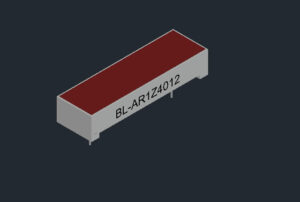
Features
- Display Area Shape: Rectangular, providing a distinct and clear area for illumination.
- Display Area Number: Features a single display area.
- Reflector Dimensions: Measures 40*12mm in width.
- Uniform Light Emitting Area: Ensures consistent and even lighting across the display.
- Low Current Operation: Energy-efficient, reducing power consumption.
- Wide Viewing Angle: Allows the light to be easily visible from different angles.
- Easily Mounted on P.C. Boards: Designed for simple integration into electronic systems.
- Flush Mountable: Can be installed to align seamlessly with the surface.
- Excellent On/Off Contrast: Provides clear visibility when the LED is active or inactive.
- Can be Used with Panels and Legend Mounts: Versatile mounting options, suitable for various types of panels.
- Categorized for Luminous Intensity: Ensures consistent brightness across different units.
- Different Colors in One Unit Available: Offers flexibility in color choices, enhancing customization options.
- Standard: Black Face, White Segment: Classic appearance for easy identification and readability.
- RoHS Compliance: Manufactured in accordance with environmental and safety standards.
Applications
- Indicator Lights: Ideal for use as indicator lights in electronic, automotive, and electrical applications.
- Control Panels: Suitable for control panels in machinery, vehicles, and other equipment.
- Signal Lights: Applicable as signal lights in industrial settings, vehicles, or consumer electronics.
- Instrumentation Displays: Useful in displaying status or readings in instrumentation panels.
- Consumer Electronics: Can be integrated into consumer electronic devices for display or indication purposes.
- Safety and Emergency Equipment: Suitable for use in safety and emergency equipment as warning or status indicators.
- Information Displays: Effective in public areas or systems where compact, clear light displays are required.


Electrical-optical characteristics:
Package configuration & Internal circuit diagram
Obtain 3D specification files
To examine all 3D specifications, save the files to your local drive and open them with your 3D application.
Lens colors in 3D files are solely for visual representation; consult the Datasheet for accurate lens type and color information.
In the event of a mismatch, the dimensions in the datasheet take precedence over the 3D specifications.

All dimensions are in millimeters(inches)
Tolerance is +-0.25(0.01″) unless otherwise note
Specifications are subject to change without notice.
Partno description:
Related Information
Applied for: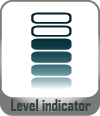
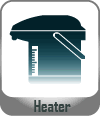
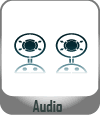


1. Application
The Seven Segment LED is widely applied for ordinary electronic equipment (such as office equipment,
communication equipment and household applications). Checking with BETLUX’s Sales in
advance for information on applications in which exceptional reliability is required, particularly
when the failure or malfunction of the LEDs may directly jeopardize life or health (such as in
aviation, transportation, traffic control equipment, medical and life support systems and safety
devices).
2. Storage
The storage ambient for the Seven Segment LED should not exceed 30℃ temperature or 70% relative humidity.
For extended storage out of their original packaging, it is recommended that the Seven Segment LEDs be stored
in a sealed container with appropriate desiccant, or in a desiccator with nitrogen ambient.
3. Cleaning
Avoid using any unspecified chemical solvent to clean LED . For example, Trichloroethylene, Chlorosen, Acetone, and Diflon S3MC.
Any cleaning method can only be taken under normal temperature in one minute or less if it is required.
Use water to clean the Seven Segment LED if necessary under room temperature
dry it immediately after that.
4.Forming
Any unsuitable stress applied to the epoxy may break bonding wires in LED
Any forming on lead pin must be done before soldering, not during or after soldering.
Avoid applying any stress to resin in order to prevent the epoxy fracture and break on bonding wire.
While forming, please use a tie bar cut or equivalent to hold or bend the pin.
2mm from the base of resin is the minimum distance for the place bending the lead pin.
Avoid bending the lead pin at the same point twice or more.

Soldering
When soldering, leave a minimum of 2mm clearance from the base of the base of the lens to the soldering point. Dipping the lens into the solder must be avoided.
Do not apply any external stress to the lead frame during soldering while the LED is at high temperature.
Recommended soldering conditions:
| IR Reflow Soldering (for SMD display) | Wave Soldering | Soldering Iron | |||
| Pre-Heat | 150-180°C | Pre-Heat | 100°C Max. | Temperature | 300°C Max. |
| Pre-Heat Time | 120sec Max. | Pre-Heat Time | 60sec Max. | ||
| Peak Temperature | 260°C Max. | SolderWave | 260°C Max. | Soldering Time | 3sec Max.(one time only) |
| Soldering Time | 10 sec Max. | Soldering Time | 5sec Max. | ||
Note: Excessive soldering temperature and/or time might result in deformation of the LED lens or failure of the LED
ESD(Electrostatic Discharge)
Static Electricity or power surge will damage the LED.
Suggestions to prevent ESD (Electrostatic Discharge):
n Use a conductive wrist band or anti-electrostatic glove when handling these LEDs
n All devices, equipment, and machinery must be properly grounded
n Work tables, storage racks, etc. should be properly grounded
n Use ion blower to neutralize the static charge which might have built up on surface of the LED’s
plastic lens as a result of friction between LEDs during storage and handling
ESD-damaged LEDs will exhibit abnormal characteristics such as high reverse leakage current,
low forward voltage, or “no light on” at low currents. To verify for ESD damage, check for “light on”
and Vf of the suspect LEDs at low currents.
The Vf of “good” LEDs should be>2.0V@0.1mA for InGaN product and >1.4V@0.1mA for AlInGaP
product.

LED dirve IC by Maxim Integrated
MAX6959 4½-Digit LED Display Driver
MAX6958 4½-Digit LED Display Driver
MAX6955 7-, 14-, 16-Segment LED Display Driver
MAX6956 LED Static Display Driver and I/O Port
MAX6954 7-, 14-, 16-Segment LED Display Driver
MAX6952 5 x 7 Matrix LED Display Driver
MAX6957 LED Static Display Driver and I/O Port
MAX6950 5-Digit LED Display Driver
MAX6951 8-Digit LED Display Driver
ICM7212 4-Digit LED Driver
ICM7212A 4-Digit LED Driver
ICM7212AM 4-Digit LED Driver
ICM7212M 4-Digit LED Driver
ICM7218A 8-Digit LED Driver
ICM7218B 8-Digit LED Driver
ICM7218C 8-Digit LED Driver
ICM7218D 8-Digit LED Driver
MAX7221 8-Digit LED Display Driver
MAX7219 8-Digit LED Display Driver
When selecting power for LED systems, it’s essential to understand several key parameters to ensure safe operation, longevity, and optimal performance. Here are some steps and considerations for LED power selection:
- Determine the Forward Voltage (Vf) of the LED(s):
Each LED has a forward voltage, which is the voltage at which the LED operates when the current is flowing through it. This value can typically be found in the LED’s datasheet.
- Determine the Forward Current (If) of the LED(s):
The forward current is the current at which the LED is designed to operate. Running an LED at higher than its rated current can reduce its lifespan and increase the heat it produces.
- Decide on the Configuration:
Series Configuration: When LEDs are connected in series, the forward voltages add up, but the current remains the same.
Parallel Configuration: When LEDs are connected in parallel, the forward voltage remains the same, but the currents add up. This configuration can be risky because if one LED fails or has a slightly lower forward voltage, it can cause the other LEDs to draw more current.
Calculate Total Power Requirements:
Power (W) = Total Forward Voltage (V) x Total Forward Current (A)
For example, if you have three LEDs connected in series, each with a forward voltage of 3V and a forward current of 20mA, the total power requirement would be:
Power = (3V + 3V + 3V) x 20mA = 9V x 0.02A = 0.18W
- Select an Appropriate Power Supply:
- Voltage Rating: The power supply voltage should match or slightly exceed the total forward voltage of your LED configuration.
- Current Rating: The power supply’s current rating should meet or exceed the total forward current of your LED configuration.
- Safety Margin: It’s a good practice to select a power supply that can provide at least 20% more power than your calculated requirement. This ensures the power supply isn’t operating at its maximum capacity, which can extend its life and ensure safer operation.
- Consider Additional Features:
- Dimming Capability: If you want to control the brightness of your LEDs, choose a power supply with dimming capabilities.
- Overcurrent and Overvoltage Protection: To protect your LEDs, select a power supply with built-in protection mechanisms.
- Thermal Management: Ensure that the power supply has adequate cooling, especially if it will be enclosed or in a location with limited airflow.
- Regulation and Efficiency:A power supply with good regulation will maintain a consistent voltage output despite variations in the load. High efficiency ensures minimal power is wasted as heat.
- Physical Size and Form Factor:Depending on where you plan to place the power supply, its size and shape may be critical factors.
In summary, when selecting power for LED systems, understanding your LED’s requirements and the configuration you plan to use is essential. Then, pick a power supply that meets those needs with some added safety margin, keeping in mind any additional features or constraints relevant to your project.
Here are some well-regarded brands in the industry:
- Mean Well: One of the most recognized brands in the LED power supply industry, Mean Well offers a wide range of products suitable for both indoor and outdoor applications. Their units often come with features like overcurrent protection, dimming capabilities, and high efficiency.
- Tridonic: A global leader in lighting technology, Tridonic offers LED drivers and power supplies that cater to various lighting solutions, from simple setups to advanced smart lighting systems.
- Philips Advance Xitanium: Philips is a well-known brand in the lighting industry, and their Xitanium series of LED drivers are known for reliability and performance. They cater to both indoor and outdoor LED applications.
- Osram: Another giant in the lighting industry, Osram offers a range of LED drivers and power supplies suitable for various applications, including architectural and street lighting.
- LIFUD: Specializing in LED drivers, LIFUD is known for its high-quality products that cater to both commercial and residential LED lighting solutions.
- MOSO: This brand offers a variety of LED drivers, especially for outdoor and industrial applications. Their products are known for durability and performance.
- TDK-Lambda: With a history in power electronics, TDK-Lambda offers a range of power supplies and LED drivers suitable for various applications, emphasizing reliability and advanced features.
